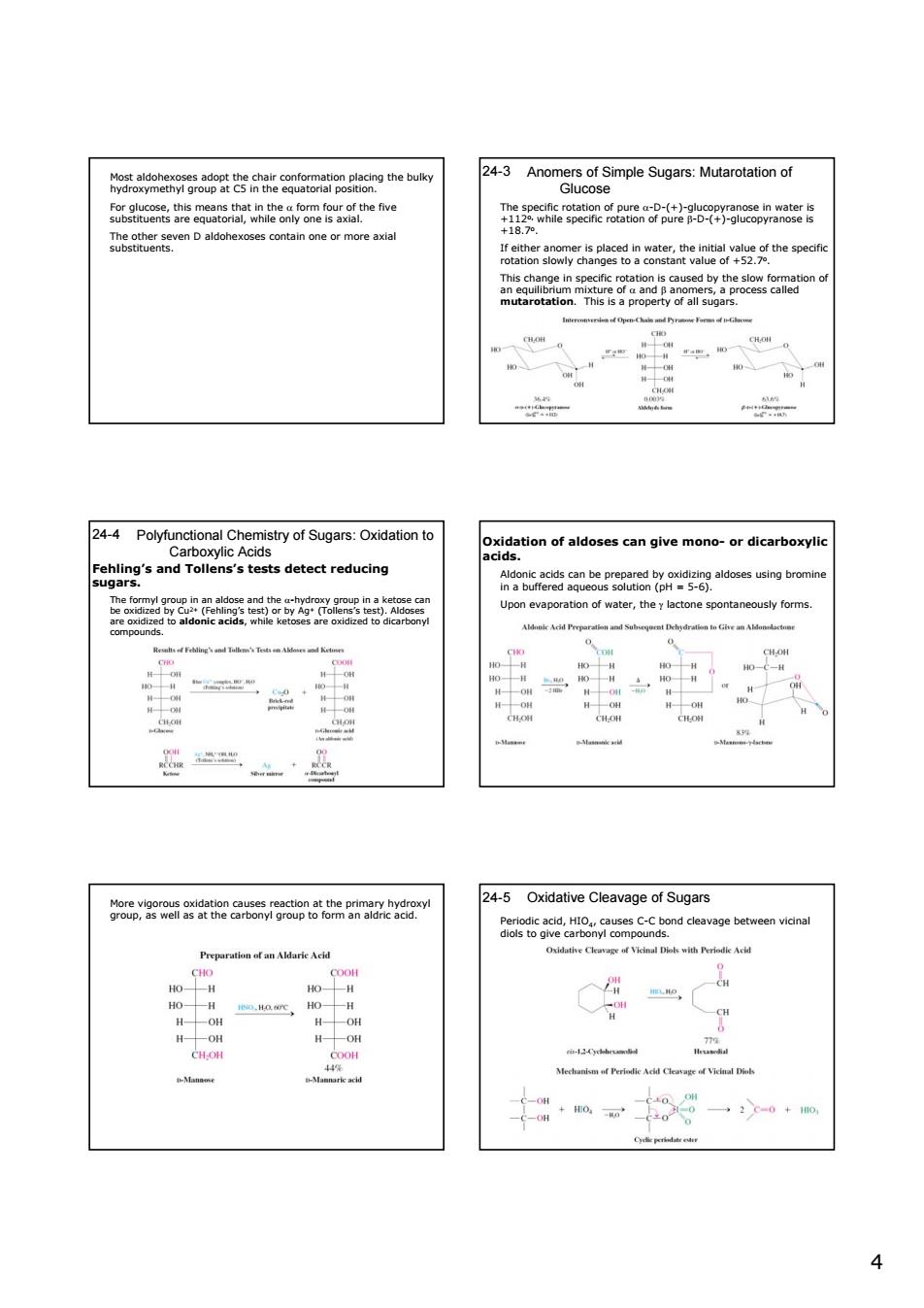正在加载图片...

ehenerenDaldohexosescontainonermoreaxal 82889n msaceethes 24-4 Polyfunctional Cher mistry of Sugars:Oxidation to xidation of aldosescan give mono-or dicarboxylic Fehling'sand Tollens's tests detect reducing odoenbrom g8eas8e9s9e8e5g3cen0t6eanaamgCg 24-5 Oxidative Cleavage of Sugars 一:g0+0 4 4 Most aldohexoses adopt the chair conformation placing the bulky hydroxymethyl group at C5 in the equatorial position. For glucose, this means that in the α form four of the five substituents are equatorial, while only one is axial. The other seven D aldohexoses contain one or more axial substituents. Anomers of Simple Sugars: Mutarotation of Glucose 24-3 The specific rotation of pure α-D-(+)-glucopyranose in water is +112o, while specific rotation of pure β-D-(+)-glucopyranose is +18.7o. If either anomer is placed in water, the initial value of the specific rotation slowly changes to a constant value of +52.7o. This change in specific rotation is caused by the slow formation of an equilibrium mixture of α and β anomers, a process called mutarotation. This is a property of all sugars. Polyfunctional Chemistry of Sugars: Oxidation to Carboxylic Acids 24-4 Fehling’s and Tollens’s tests detect reducing sugars. The formyl group in an aldose and the α-hydroxy group in a ketose can be oxidized by Cu2+ (Fehling’s test) or by Ag+ (Tollens’s test). Aldoses are oxidized to aldonic acids, while ketoses are oxidized to dicarbonyl compounds. Oxidation of aldoses can give mono- or dicarboxylic acids. Aldonic acids can be prepared by oxidizing aldoses using bromine in a buffered aqueous solution (pH = 5-6). Upon evaporation of water, the γ lactone spontaneously forms. More vigorous oxidation causes reaction at the primary hydroxyl group, as well as at the carbonyl group to form an aldric acid. 24-5 Oxidative Cleavage of Sugars Periodic acid, HIO4, causes C-C bond cleavage between vicinal diols to give carbonyl compounds